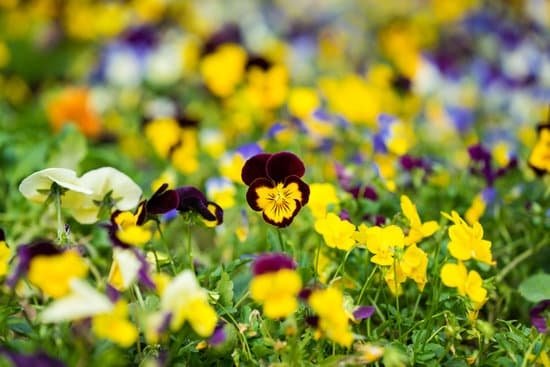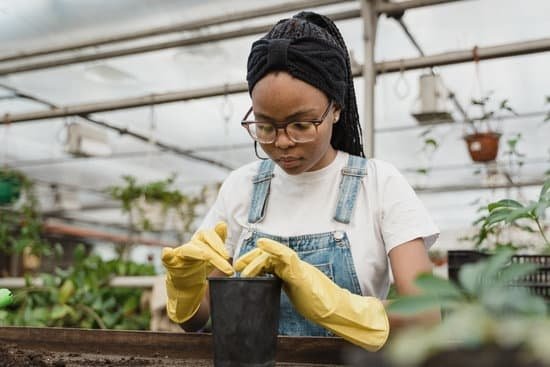
Indoor gardening has become a growing trend in recent years, captivating the hearts of plant enthusiasts and homeowners alike. The allure of creating a green oasis within the confines of our homes is undeniable. Not only does indoor gardening add an aesthetic appeal to any space, but it also offers numerous benefits that go beyond mere decor.
In this article, we will explore the joy and benefits of indoor gardening, from the peace it brings to our lives to its ability to purify the air we breathe. We will delve into the factors to consider when choosing plants for indoor gardening and provide recommendations for low-maintenance options that are perfect for beginners. Additionally, we will uncover tips and tricks for setting up a functional and stylish indoor garden space.
Creating an indoor garden is more than just placing plants on a windowsill; it requires careful attention to lighting, temperature, humidity control, and container selection. We will discuss these essential factors in detail so you can ensure your plants thrive in their cozy environment. Furthermore, we will highlight some must-have tools and supplies necessary for successful indoor gardening, focusing on organic or eco-friendly options.
Join us as we embark on a journey into the world of indoor gardening where soil selection, watering techniques, fertilization methods, and pest control all play crucial roles. We’ll provide insights into common challenges faced by indoor gardeners and offer effective solutions to keep your plants healthy and thriving.
So whether you have a spacious home or limited living quarters in urban areas, there’s a place for your green thumb with indoor gardening. Discover creative ideas like vertical gardens or herb walls that maximize space while adding natural beauty to your surroundings. Learn about how to maintain your indoor garden through pruning, propagation, and harvesting techniques.
Are you ready to embrace the green revolution? Join us as we explore the joys of indoor gardening, bringing nature indoors to enhance our well-being and contribute positively to our environment.
Choosing the Right Plants for Indoor Gardening
Indoor gardening offers a unique opportunity to bring the beauty and benefits of nature into our homes. When starting an indoor garden, one of the most important decisions is choosing the right plants. There are several factors to consider when selecting indoor plants, including their care requirements, aesthetic appeal, and potential air purification benefits.
Firstly, it’s essential to assess your level of gardening experience and the amount of time you can dedicate to plant care. For beginners or those with busy schedules, low-maintenance indoor plants are ideal choices. These plants typically require minimal watering and can tolerate various light conditions. Some popular low-maintenance options include snake plants, pothos, and ZZ plants.
If you’re more interested in using indoor plants for decorative purposes or improving indoor air quality, there are specific varieties that excel in these areas. Plants like peace lilies, spider plants, and English ivy are known for their ability to purify the air by filtering out harmful toxins. They not only add visual interest but also contribute to a healthier indoor environment.
| Plant Name | Care Requirements | Aesthetic Appeal | Air Purification Benefits |
|---|---|---|---|
| Snake Plant | Low water needs; tolerates low light | Tall foliage; architectural look | Filters formaldehyde, benzene, xylene from the air |
| Pothos | Low water needs; thrives in various light conditions | Vibrant trailing vines; heart-shaped leaves | Effective in removing formaldehyde, benzene, carbon monoxide |
| Peace Lily | Moderate water needs; prefers bright indirect light | Lustrous dark green leaves; white flowers | Removes toxins like formaldehyde, trichloroethylene, benzene |
It’s important to note that each plant has its own specific care requirements, so it’s essential to research and understand how to meet those needs. By choosing the right plants for your indoor garden, you can ensure a successful and rewarding gardening experience.
Setting up Your Indoor Garden
Setting up an indoor garden is not only about selecting the right plants but also about creating a functional and aesthetically pleasing space. This section will provide you with tips and tricks for designing and laying out your indoor garden.
One important consideration when setting up your indoor garden is the choice of containers. There are many container options available, including hanging planters, terrariums, and traditional pots. Hanging planters can be a great way to save space and add visual interest to your indoor garden. Terrariums, on the other hand, create a mini-ecosystem and are perfect for low-maintenance plants like succulents. When selecting containers, make sure they have proper drainage to prevent waterlogging and promote healthy plant growth.
Another key aspect of setting up your indoor garden is ensuring that your plants receive adequate lighting, temperature, and humidity control. Most indoor plants thrive in bright yet indirect light, so it’s essential to place them near windows or use grow lights if natural light is limited. Temperature-wise, most houseplants prefer temperatures between 60-75°F (15-24°C).
Additionally, maintaining proper humidity levels is crucial for tropical plants that require higher humidity. Consider using a humidifier or placing a tray filled with water near your plants to increase moisture in the air.
To enhance the layout of your indoor garden, consider incorporating elements like shelving units or stands to display your plants at different heights. This not only adds visual appeal but also maximizes the use of vertical space. Furthermore, don’t forget to arrange your plants based on their specific needs – grouping together those with similar light or watering requirements can simplify care routines and ensure optimal growth.
In summary, designing and laying out your indoor garden involves careful consideration of container choices, lighting conditions, temperature control, humidity levels, as well as creating visually appealing arrangements. By paying attention to these aspects, you can create an inviting and thriving green oasis in your home.
Essential Indoor Gardening Tools and Supplies
Indoor gardening requires a range of essential tools and supplies to ensure successful plant care and maintenance. Having these items readily available will make your indoor gardening experience more enjoyable and efficient. Here are some must-have tools and supplies for indoor gardening:
1. Pruning Shears: Pruning shears are essential for trimming and shaping indoor plants. They help remove dead or diseased foliage, promote proper growth, and maintain the overall health of your plants.
2. Watering Can: A watering can with a long spout is crucial to deliver water directly to the roots of your plants without causing damage to the leaves. Opt for a watering can with a narrow spout for precision watering.
3. Plant Mister: A plant mister is useful for providing moisture to plants that require high humidity levels or regular misting, such as ferns or orchids. It also helps in cleaning dust off the leaves, promoting better photosynthesis.
4. Garden Gloves: Protecting your hands while working in the garden is important, especially when handling soil or thorny plants. Invest in a pair of comfortable but durable garden gloves that fit well.
5. Potting Mix: High-quality potting mix is vital for healthy plant growth indoors. Choose a potting mix specifically formulated for indoor plants, as they provide adequate drainage, retain moisture, and contain nutrients necessary for plant development.
6.
| Gardening Tools | Description |
|---|---|
| Bonsai Trimming Scissors | Bonsai trimming scissors are sharp and precise tools specifically designed for bonsai trees, but they can also be used on other small indoor plants requiring delicate pruning. |
| Soil Moisture Meter | A soil moisture meter is a handy tool for indoor gardening, as it helps determine the moisture level in the soil. This ensures that plants are not overwatered, which can lead to root rot. |
| Mini Rake and Spatula Set | This set of mini rake and spatula tools is especially useful for maintaining terrariums or small container gardens. They allow for gentle soil leveling, removing debris, and careful planting. |
Having these essential tools and supplies on hand will enable you to properly care for your indoor garden. Additionally, consider using organic or eco-friendly products, such as organic fertilizers or natural pest control methods, to minimize any potential harm to the environment and your health. With the right tools, you can easily maintain healthy and thriving indoor plants that bring life and beauty into your home.
Indoor Gardening Techniques
Indoor gardening requires specific techniques when it comes to soil, watering, and fertilizing. By understanding and implementing these techniques, you can ensure the health and vitality of your indoor plants.
Choosing the Right Soil Mix
One of the most important aspects of successful indoor gardening is choosing the right soil mix for your plants. Unlike outdoor gardens, indoor plants rely solely on the nutrient content of their potting soil. When selecting a soil mix, consider factors such as water retention, aeration, and nutrient levels.
For most indoor plants, a well-draining soil mix is essential to prevent root rot. Consider using a combination of peat moss, perlite or vermiculite, and organic matter like compost or coconut coir. These components provide proper drainage and moisture retention while supplying essential nutrients to your plants.
Proper Watering Techniques
When it comes to watering indoor plants, striking the right balance is crucial. Overwatering can lead to root rot and other fungal diseases, while underwatering can cause plant wilting and stress. Understanding your plant’s moisture needs and its environment is key.
Typically, it’s best to water indoor plants when the top inch of soil feels dry to the touch. Use room temperature water to avoid shocking the roots and ensure even distribution throughout the container. Avoid leaving excess water sitting in saucers or trays as this can promote mold growth.
Fertilizing for Indoor Plants
Indoor plants rely heavily on regular fertilization since they have limited access to natural sources of nutrients. Choose organic or slow-release fertilizers specifically formulated for houseplants as they release nutrients gradually over time.
When fertilizing, follow manufacturer instructions regarding application rates and frequency. Be careful not to overdose your plants with fertilizer as this can burn their roots. Regularly check for signs of nutrient deficiencies (e.g., yellowing leaves) and adjust your fertilization regimen accordingly.
By implementing these indoor gardening techniques for soil, watering, and fertilizing, you can provide the ideal growing conditions for your indoor plants. Remember to monitor your plants closely, making adjustments as needed to ensure their optimal health and growth.
Dealing with Common Indoor Gardening Challenges
Addressing Pests and Diseases
One of the common challenges that indoor gardeners face is dealing with pests and diseases. These unwelcome visitors can wreak havoc on your indoor plants, affecting their growth and overall health. To address this challenge, it is essential to be vigilant and take proactive steps in preventing and treating pest infestations.
Firstly, it’s important to regularly inspect your plants for any signs of pests or diseases. Common pests that may invade your indoor garden include aphids, spider mites, whiteflies, and mealybugs. If you notice any insects or unusual spots on leaves, take immediate action to eliminate them.
There are several natural remedies that can help control pests without the use of harmful chemicals. For instance, you can create a homemade insecticidal soap by mixing liquid dish soap with water. Neem oil is another effective natural solution that targets pests while being safe for plants.
In addition to pest control measures, it is crucial to maintain proper cleanliness in your indoor gardening space. Remove any dead leaves or debris regularly as they can attract pests and become breeding grounds for diseases. By practicing preventive measures and addressing pest issues promptly, you can keep your indoor garden healthy and thriving.
Enhancing Lighting Conditions
Lighting plays a crucial role in the success of an indoor garden. Lack of sunlight is a common challenge faced by indoor gardeners, especially those who have limited access to windows or live in areas with long winters. Luckily, there are several solutions to enhance lighting conditions for your plants.
One option is to use artificial grow lights specifically designed for plant growth. LED grow lights are a popular choice as they provide a full spectrum of light necessary for photosynthesis. When selecting grow lights, consider the specific light requirements of your plants as different species have varying needs.
To maximize the lighting effect, position the grow lights at an appropriate distance from your plants and adjust the duration of light exposure based on their requirements. It’s important to note that each plant has different light intensity preferences, so it may take some trial and error to find the optimal settings for your indoor garden.
Additionally, consider rotating your plants occasionally to ensure even exposure to light. This will prevent them from leaning towards the light source or developing uneven growth patterns. By providing sufficient and appropriate lighting, you can help your indoor plants thrive even in spaces with limited access to natural sunlight.
Regulating Temperature and Humidity
Maintaining the right temperature and humidity levels is essential for the health of your indoor garden. Extreme temperature fluctuations or excessively dry or humid conditions can negatively impact plant growth and increase the risk of pest infestations and diseases.
To regulate temperature, aim to keep your indoor garden within a comfortable range for both you and your plants. Most indoor plants prefer temperatures between 60°F (15°C) and 75°F (24°C). Avoid placing your plants near drafty areas or cold windows during winter months as this can lead to temperature stress.
Humidity levels also play a crucial role in the success of an indoor garden. Many houseplants thrive in moderate humidity levels between 40% and 60%. If your home has dry air, especially during winter when heating systems are running, consider using a humidifier or placing a tray of water near your plants to increase humidity.
On the other hand, if you are dealing with high humidity levels in certain areas of your home, such as bathrooms or kitchens, ensure proper airflow and ventilation to prevent fungal growth on leaves or root rot. A small fan can be useful in improving air circulation around your indoor garden.
By maintaining a suitable temperature range and controlling humidity levels, you can create an ideal environment for healthy plant growth. Regularly monitor these factors and make necessary adjustments based on the specific needs of your indoor plants.
Creative Indoor Gardening Ideas
Indoor gardening doesn’t have to be limited to traditional potted plants. In fact, there are numerous creative ideas that can help you maximize your indoor gardening space and add a unique touch to your home decor. This section will explore some innovative and space-saving indoor gardening ideas, including vertical gardens, herb walls, and terrariums.
1. Vertical Gardens:
Vertical gardens or living walls are perfect for urban dwellers with limited floor space. These gardens involve growing plants vertically on a wall or using specially designed vertical planters. Not only do vertical gardens add visual interest to a room, but they also offer benefits such as improved air quality and insulation. Some popular plants for vertical gardens include ferns, succulents, and trailing vines like pothos or ivy.
2. Herb Walls:
Imagine having fresh herbs at your fingertips when cooking in the kitchen. Herb walls can make this dream a reality. By installing shelves or pockets on a wall and planting herbs in them, you can create a functional and aesthetically pleasing herb garden indoors. Herbs like basil, thyme, mint, and rosemary thrive indoors and can provide you with an abundance of flavors for your culinary creations.
3. Terrariums:
Terrariums are miniature gardens enclosed in glass containers that require minimal care. They not only make beautiful decorative pieces but also provide an ideal environment for low-maintenance plants like succulents or air plants (tillandsias). The glass container keeps humidity levels stable while allowing sunlight to penetrate. You can get creative by using different types of containers such as jars, fish tanks, or even light bulbs.
By incorporating these creative indoor gardening ideas into your home, you can transform any space into a green oasis filled with life and beauty. Whether it’s utilizing vertical walls for showcasing cascading greenery or creating functional herb gardens in the kitchen, these ideas offer endless possibilities for both experienced gardeners and beginners seeking a fun and sustainable hobby.
Maintaining Indoor Garden
Maintaining an indoor garden is crucial for the health and longevity of your plants. Regular maintenance tasks such as pruning, propagation, and harvesting are essential to ensure that your indoor garden thrives. In this section, we will explore these maintenance practices in detail and provide helpful tips and guidance.
Pruning is an important aspect of maintaining an indoor garden as it helps promote healthy growth and shape your plants. It involves removing dead or damaged leaves, stems, or flowers to encourage new growth.
When pruning your indoor plants, make sure to use clean and sharp tools to prevent any damage or infection. It’s also important to research the specific pruning requirements for each type of plant you have in order to avoid over-pruning or damaging the plant’s structure.
Propagation is a great way to expand your indoor garden or share plants with friends and family. There are several methods of propagation including stem cuttings, leaf cuttings, division, and seed starting. Stem cuttings are one of the most common methods used for propagation.
Simply cut a healthy stem from the parent plant just below a node (where leaves emerge), remove the lower leaves, dip the cut end in rooting hormone (optional), and place it in water or a well-draining potting mix until roots develop. Each method of propagation has its own set of instructions, so be sure to research and follow the proper techniques for each type of plant you wish to propagate.
Harvesting is another rewarding aspect of maintaining an indoor garden, especially if you’re growing herbs, fruits, or vegetables. The key to successful harvesting is knowing when your plants are ready for harvest based on their individual timelines and growth patterns. Herbs should be harvested when they have reached their prime flavor profile before they begin flowering.
Fruits and vegetables should be harvested when they reach maturity by following specific guidelines provided for each crop. Also remember to use clean tools when harvesting to prevent any contamination.
Conclusion
In conclusion, indoor gardening is a growing trend that offers numerous benefits and brings joy, peace, and relaxation to our lives. By embracing the green revolution of indoor gardening, individuals can create their own little oasis within their homes. The benefits of having an indoor garden are vast – from aesthetic appeal to air purification and even boosting mental wellbeing.
When choosing plants for indoor gardening, it is important to consider factors such as maintenance level and purpose. Beginners may opt for low-maintenance plants that require minimal care, while others might prioritize plants that enhance the visual appeal of their space or improve the air quality. Whatever the preference, there are countless options available to suit every individual’s needs.
Setting up an indoor garden requires careful consideration of design and layout. Creating a functional and stylish space involves utilizing various container options such as hanging planters or terrariums. Additionally, proper lighting, temperature control, and humidity levels must be taken into account to ensure optimal plant growth.
To ensure successful indoor gardening, it is essential to have the right tools and supplies on hand. Using organic or eco-friendly products not only benefits your plants but also promotes a healthier environment overall. Tools that facilitate watering, pruning, and soil maintenance are highly recommended for efficient maintenance of an indoor garden.
Although indoor gardening poses its own set of challenges such as pests, diseases, or inadequate lighting, these problems can be overcome with effective solutions. Troubleshooting techniques will help enhance plant growth in an indoor environment and enable enthusiasts to cultivate thriving gardens within their homes.
For those looking for creative ideas in indoor gardening, vertical gardens, herb walls, or terrariums offer innovative ways to maximize space utilization. Living walls serve as captivating additions to urban dwellings while herb walls or kitchen garden setups provide fresh herbs at arm’s reach during culinary adventures.
Maintenance is key when it comes to preserving the health and vitality of your indoor garden. Regular pruning and deadheading keep plants in top shape, while propagation allows for the expansion of your garden or sharing with friends. Understanding how and when to harvest herbs, fruits, or vegetables ensures that the rewards of your indoor gardening efforts are reaped.
Frequently Asked Questions
How do you garden indoors in a house?
Gardening indoors in a house can be achieved by creating a suitable environment for plants to thrive. Firstly, it is essential to choose an appropriate location with good natural light or invest in artificial grow lights. Assessing the space available is important as this will determine the size and type of containers used for planting.
Choosing the right potting soil that is well-draining and provides adequate nutrients is crucial for healthy growth. Regular watering, taking care not to over saturate the soil, along with proper ventilation to prevent stagnant air, are key factors in maintaining an indoor garden. Additionally, monitoring humidity levels and controlling temperature variations contribute to creating a favorable growth environment.
What plants to grow in an indoor garden?
When selecting plants for an indoor garden, it is important to consider their specific requirements and the conditions of your home. Some popular choices for indoor gardening include herbs like basil, thyme, and mint, as they can thrive indoors with limited space and have aromatic benefits when harvested fresh. Plants like spider plants and pothos are great options for greenery as they tolerate lower light conditions well and help purify the air indoors.
Succulents such as jade plant or aloe vera are ideal for those looking for low-maintenance options due to their ability to store water efficiently. Ultimately, choosing plants that align with your personal preferences and fit within the constraints of your indoor environment will lead to a successful indoor garden.
What vegetables can be grown indoors?
Many vegetables can successfully be grown indoors provided certain considerations are made regarding available space, lighting conditions, and temperature control. Leafy greens like spinach, lettuce, kale, and arugula tend to do well indoors due to their compact size and shorter growing seasons. These vegetables can be harvested regularly by removing outer leaves while allowing the central core to continue producing new foliage.
Herbs such as chives, parsley, cilantro, or even dwarf versions of larger varieties like cherry tomatoes or bell peppers can also be cultivated indoors successfully if ample light and appropriate containers are provided. Root vegetables like radishes and carrots can be grown indoors as well, but they require deeper containers to accommodate their root system. Ultimately, a selection of vegetables that are suited to your indoor growing conditions can bring fresh produce right into your home throughout the year.




